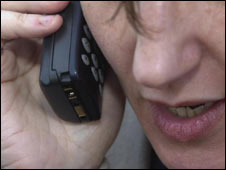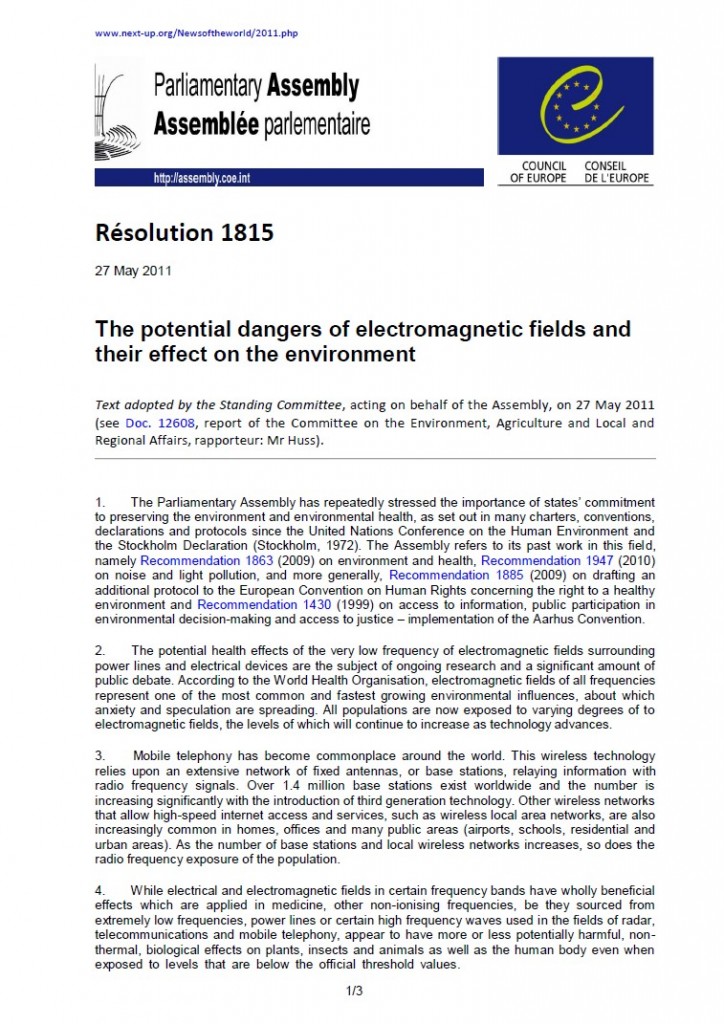Portada del sitio > Prensa > US cancer boss in mobiles warning
BBC News, 24/7/08

US cancer boss in mobiles warning
Viernes 25 de julio de 2008 · 1173 lecturas
US cancer boss in mobiles warning
Further studies are looking into possible long-term effects
The director of a leading US cancer research institute has sent a memo to thousands of staff warning of possible higher risks from mobile phone use.
Ronald Herberman, of the University of Pittsburgh Cancer Institute, said users should not wait for definitive studies on the risk and should take action now.
He said children should use mobiles in emergencies only and adults should try to keep the phone away from the head.
No major academic study has confirmed a link to higher brain-tumour risks.
Electromagnetic fields
Dr Herberman said his warning was based on early findings from unpublished data.
"We shouldn’t wait for a definitive study to come out, but err on the side of being safe rather than sorry later," he says.
[There is a] growing body of literature linking long-term cell phone use to possible adverse health effects including cancer
Ronald Herberman
Q&A: Mobile phone safety
"I am convinced that there are sufficient data to warrant issuing an advisory to share some precautionary advice on cell phone use," the memo says.
Dr Herberman’s warning to 3,000 staff says children should be protected as their brains are still developing.
He lists tips including switching sides regularly while talking on mobiles.
A major six-year research study in the UK said last year that there were no short-term adverse effects to brain and cell function from mobile phone use.
However, the UK Mobile Telecommunications and Health Research Programme (MTHR) said there was a "hint" of a higher cancer risk in the long term and that its research would look into the effects over a 10-year period.
Programme chairman Professor Lawrie Challis said: "We can’t rule out the possibility at this stage that cancer could appear in a few years’ time."
Evidence ’still confused’
Prof Alan Preece, Emeritus Professor of Medical Physics at the University of Bristol, said the evidence for harmful effects was "still confused and inconclusive".
He added: "Whilst I would agree that precaution for children is an excellent idea... it is only very long term heavy use that would seem to be sensible to avoid until there is positive evidence of harm.
"In any case, modern phones cause far less exposure than their counterparts 10 or 20 years ago, and hands-free devices effectively solve the problem by removing heavy exposure to the head."
Prof Will Stewart of the University of Southampton, who is a Fellow of The Royal Academy of Engineering, said he would be intrigued to see the early research.
"One cannot refute the ’early findings from unpublished data’ since we have not seen them - but there is enough published data, including the MTHR review, to make the advice sound alarmist."
Long-term effects
An earlier UK report said in 2005 that mobile phone use by children should be limited as a precaution - and that under-eights should not use them at all.
Mobile phones emit radio signals and electromagnetic fields that can penetrate the human brain, and some campaigners fear that this could seriously damage human health.
A US analysis by the University of Utah this year of thousands of brain tumour patients found no increased risk as a result of mobile use, but added that the effects from long-term use "awaits confirmation by future studies".
Research reported in 2006 by the British arm of an international project called Interphone concluded that mobile phone use did not lead to a greater risk of brain tumour.
Recent Danish and French studies also found no increased risk of cancer.
But a study of 500 Israelis found this year that heavy mobile phone use might be linked to an increased risk of cancer of the salivary gland.
Ver la noticia original AQUÍ







